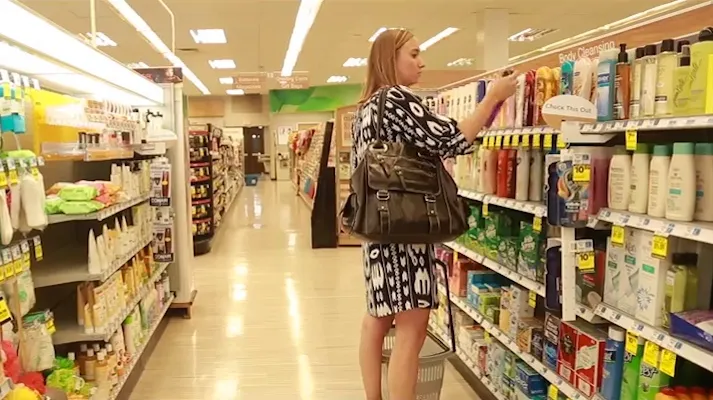Consumer preferences evolve every single day. But the drug store experience hasn’t kept up. Picking up a prescription is the same as it was a decade ago. But why? Is the retail pharmacy stuck?

Lokesh Ohri
Consider this: More than 50% of the companies on the Fortune 500 list 20 years ago no longer exist. Failure is more prevalent than we think and is typically at the hands of evolution avoidance. After decades of “keep on keeping on,” pharmacies need to disrupt their business model or risk the Blockbuster Effect. To truly keep pace, pharmacies must consider the progression of the three legs of the stool — the consumer, the business model and the payer/provider ecosystem — and how digital, especially generative AI can unlock longevity.
Now: Digital natives drive demand for convenience, but cost pressures win in the end.

Kenny O’Neill
Since the pandemic, digital health has become more widely adopted — and regulatory changes, rising prescription prices and overall consumer behavior have continued to advance virtual patient care. However, those same pressures have also continued to push a focus on margin, but at what cost?
Consumer: Today, consumers are judging pharmacy companies on the same playing field as other retailers, regardless of industry. That means they are expecting the same frictionless experience they receive when purchasing clothes, buying groceries or picking up everyday staples. In fact, 75% of consumers expect the same level of service from health providers that they receive from other businesses. As the digital experience in other categories advances, pharmacies must follow suit.
Business models and ecosystems: At the same time, it’s no secret that the pharmacy operating model is under extreme pressure. There are not enough pharmacists to deliver the necessary care, and reimbursements from governments and payers are shrinking. Further, a simplistic fulfillment and reimbursement model drives today’s payer, provider and pharmacy ecosystem. This dynamic has forced retail pharmacies to prioritize cost takeout. With margins diminishing significantly every year, we’re reaching a tipping point where there are no more costs to cut without breaking down an already dated consumer experience.
In the age of digital natives expecting more, optimizing for cost and volume is no longer a recipe for growth. Pharmacies must become more than a storefront to pick up pills. They must make better use of data, technology and AI to not only find efficiencies but also drive convenience through omnichannel access to medication and pharmacy services, and fill care gaps in the community and primary care.
Next: Health and wellness merge as emerging technology takes hold.
More than ever before, we’re seeing health and wellness intersect as consumers opt for preventive and personalized wellness alongside their care needs. This shift brings with it more consumer health data than companies have ever had access to, but also more expectations that this data is used intelligently.
Consumer: Wellness technology — from apps to wearables such as digital fitness wrist bands — is tracking everything from weight to sleep patterns and heart rate. These insights are, in turn, driving new consumer behaviors — changing what they buy, how they buy and how they live. For example, we’ve seen an increasing number of non-diabetic Millennials and Gen Z wearing continuous glucose monitoring (CGM) patches and using the data to make decisions about their food purchasing and consumption. Technology-driven preventive approaches may upend the care model completely as consumers not only generate more data but also become healthier overall and connect their health journey to their larger consumer journey.
Business models and ecosystems: There’s an expectation that the products, services and experiences keep up with the level of data provided, but data-driven business models are not today’s norm in the retail pharmacy landscape. Drug stores should work across the payer/provider ecosystem and the broader consumer value chain to create digital hubs that use data to address the convergence of health and wellness more holistically, and bring new models of primary care to fill gaps.
These trends are already happening, and it’s only a matter of time — and a short one at that — before they are widely adopted. The journey from now to next will require retail pharmacies to take a more integrated view of health and wellness. Retailers are increasingly expanding to meet multiple consumer needs, and becoming points of care is just one of these avenues. But it’s time to take that a step further. Pharmacies will need to implement data-driven and technology-backed approaches to move beyond the prescription, establishing alternative revenue streams across more parts of the consumer health journey.
Beyond: Generative AI prescribes an entirely new approach to retail health.
The pharmacy of the future will likely be less of a place where you get prescriptions filled and more of a connected digital health ecosystem — powered by digital platforms like generative AI. To continue to move from next to beyond, pharmacies will need to meet a new definition of experience and convenience.
Consumer: With the rise of shopping AI, appealing to the consumer will become an entirely different ballgame. What happens when companies are required to market and sell to an algorithm? It means creating a consumer health experience that accommodates the preferences and behaviors of AI acting as proxies for consumers. And with technology-backed operations, the human-to-human retail pharmacy experience could soon become AI to AI. Take, for example, a consumer who has celiac disease and wears a CGM patch. Their prescribed medicine auto-refills each month, but must be taken with food. The auto-replenishment process could also use generative AI to remind the consumer’s shopping AI to repurchase the gluten-free foods best suited to be eaten with the medication and, based on learnings from CGM data, won’t spike their blood sugar, and even send that data directly to their local grocer’s AI.
Business models and ecosystems: As generative AI takes hold, how pharmacies make money, and the front- and back-office processes to help them do so, will fundamentally change. In this future model, data will be shared among connected health systems to not only predict patient needs, such as prescription refills, but also collect data to feed back into adherence, precision medicine, surgery centers, advanced care and more. This interconnected, real-time data system will not only automate health and wellness but also predict what’s needed before it’s needed, turning the pharmacy into a digital platform. Take the celiac example from before. Now layer on operational AI. Generative AI chatbots can prompt the pharmacist to suggest items based on other personalized nutritional information or evidence review of different drugs compared to the patient’s genome. They could also automate refill timing and delivery based on algorithms that know when the consumer is typically at home or what time they take their medication. As pharmacies make this transition, they’ll be more equipped to stay ahead as they are able to generate more capital to reinvest in the business and into the ecosystem.
If the now is here, the next is nascent, and the beyond is coming much faster than we could have ever imagined, how can retail pharmacies advance along the evolutionary continuum?
Three things pharmacies should do first:
- Define future state vision and conduct an AI readiness assessment across data, operating model, technology, people and processes.
- Assess buy, build and partner strategies across capability gaps, strategically developing ecosystems to build and deploy those capabilities necessary to meet consumer needs.
- Finally, create an implementable AI road map that prioritizes detailed initiatives to achieve future state and fuels sustainable growth.
Those coming out ahead will be the ones that can successfully use the power of generative AI to adopt a new health model — one that is viewed by consumers as a one-stop resource for all their health and wellness needs. We’re entering a unique turning point in health care, where companies are racing to crack the consumer health experience once and for all. At the risk of sounding alarmist, the do-or-die moment is not far off. The pharmacy is dead, long live the pharmacy.
Lokesh Ohri is Americas consumer consulting leader at EY. Kenny O’Neill is a principal in the company’s digital health consulting practice. The views reflected in this article are those of the authors and do not necessarily reflect the views of Ernst & Young LLP or other members of the global EY organization.









